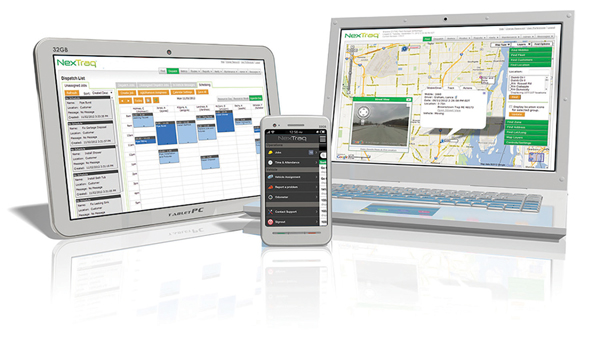
Jobsite safety is a major concern for business managers in the construction industry. The equipment used by company employees every day can put them at risk, even when equipment is well-maintained and used correctly. Construction business owners are also concerned about the safety of their employees behind the wheel off the jobsite. In this industry, employees spend quite a bit of time driving to and from jobsites, which can potentially be the most dangerous part of the day for a contractor. The Bureau of Labor Statistics (BLS) reports that fatal transportation incidents accounted for 2 out of 5 fatal workplace incidents in 2013.
In addition to endangering the lives of employees and others on the road, vehicle crashes can also create strain on a company’s finances. The average on-the-job crash costs an employer $16,500. Crashes involving injuries cost an average of $73,750, and those with fatalities average more than $500,000, according to the Network of Employers for Traffic Safety (NETS).
A GPS fleet tracking solution can increase driver safety, reduce the risk of accidents and improve company culture and policies when it comes to driver education. Contractors should consider a comprehensive fleet tracking solution that offers features to combat a number of dangerous driving behaviors and habits.

Distracted Driving
Although the dangers of distracted driving are apparent, it’s still a major problem across the country. In 2012, there were 3,328 fatalities and more than 420,000 people injured in accidents involving a distracted driver, according to the National Highway Traffic Safety Administration (NHTSA). Occupational drivers are regularly driving to and from jobsites, transporting work crews, equipment and tools. If these drivers are making and receiving phone calls regarding project updates while on the road, they are increasing the chances of an accident.
Currently, 44 states ban text messaging while driving, and 14 states prohibit any type of hand-held cellphone use while driving. According to NETS, more than 90 percent of all motor vehicle crashes are caused by human error and neglect. When a company employee causes an accident while on the job, the risk of a lawsuit against the employer increases dramatically. Settlements of more than $1 million are not unusual.
According to the AAA Foundation Traffic Safety Culture Index, more than 88 percent of licensed drivers believe that drivers talking on cellphones pose somewhat or a very serious threat to their personal safety. In addition, licensed drivers feel an even greater danger when it comes to texting or emailing behind the wheel, with 96 percent of drivers reporting that these behaviors pose a threat to others on the road. However, a similar percentage of drivers admit to practicing these driving behaviors regularly.
What is the solution? A comprehensive GPS fleet tracking solution should offer a tool that prevents talking, texting, emailing and web surfing while the vehicle is in motion. If someone attempts to contact the driver while the cell phone is disabled, the caller will receive a text response that the driver is operating a vehicle and will return the call or text shortly. This eliminates the pressure on the driver to respond immediately. By adding this safety layer to standard company policy, the risk of an employee being involved in a vehicle crash is greatly reduced.
Safe Driving Behaviors
We all know that certain driving habits such as speeding, aggressive and distracted driving are dangerous. The NHTSA defines aggressive driving as occurring when “an individual commits a combination of moving traffic offenses so as to endanger other persons or property.” This includes, but is not limited to, tailgating, weaving in and out of traffic, speeding, running stop signs or red lights and preventing others from passing.
Speed, specifically, is a factor in nearly one-third of all fatal crashes, or approximately 1,000 deaths monthly, according to the NHTSA. The effectiveness of restraint devices such as airbags and seatbelts declines as the impact speed increases. In addition, the probability of death, disfigurement or debilitating injury doubles for every 10 mph over 50 mph that a vehicle travels.
GPS fleet tracking solutions offer tools to help combat these distracted and dangerous driving behaviors. When considering fleet tracking options, look for a solution that provides driver safety reports. Reports can help proactively ensure that driver and fleet safety is a priority by identifying aggressive driving behaviors such as speeding, harsh braking, rapid acceleration and sudden cornering. These reports can also rank employees based on their performance of these key behaviors, which can help pinpoint drivers that are in need of coaching. As an added bonus, when these dangerous driving behaviors are eliminated, fuel efficiency increases, benefitting the company’s bottom line.
Comprehensive Driver Programs
The key to ensuring your fleet practices safe driving habits lies in the enforcement of policies and company expectations.
Companies and drivers that operate large trucks and buses are protected by comprehensive safety regulations. However, no federal occupational safety regulations exist to protect workers who use smaller, personal or employer-owned vehicles. It is essential that such companies enforce the policies they create to protect both employees and the company from potential litigation. Consider a driver incentive program as part of your company culture, which may encourage additional safe driving behaviors.
A comprehensive GPS fleet tracking solution should also offer proactive tools, such as online driver education courses. Taking a proactive approach to driver safety encourages responsible driving, minimizes incidents and can eliminate many traffic-related costs. Construction companies may also experience reduced insurance costs and can track, monitor and manage progress.
Overall, these solutions can dramatically decrease the costs associated with running a fleet while reducing the risk of an employee being involved in an accident. Business managers are responsible for protecting their employees against the dangers of driving. Driver safety and educational tools can provide managers with data to achieve this goal.
By The Numbers
2 out of 5
The Bureau of Labor Statistics (BLS) reports that fatal transportation incidents accounted for 2 out of 5 fatal workplace incidents in 2013.



